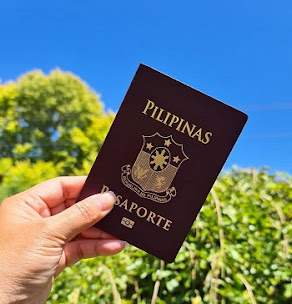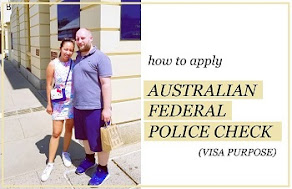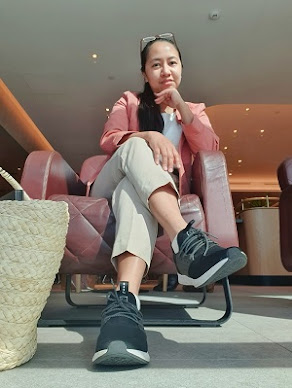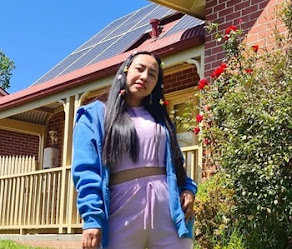Society has become blasé. Stores are littered with mass-produced attire. While many retailers, each delivering similarly low-quality fringed garments, are ground down by mundane trends, customers have settled for these options. Enter UNIQLO, the Japanese retail juggernaut that is displacing fast fashion with a definition of high luxury.
The genius of UNIQLO lies with founder and current CEO, Tadashi Yanai, who is currently the wealthiest man in Japan. He set an ambitious goal of $50 billion in 2020 sales, and his strategy involves aggressive exporting of garments that are produced and designed in Japan to recreate typical American basics and catered to consumers of every age and gender. Looking into the business model, one can see that Yanai’s strategy, ambitious as it may be, works.
Since UNIQLO first entered the American market with its SoHo, New York store in November 2006, it has monopolized fashion news headlines, and rightly so. In August 2013, UNIQLO Japan outlet sales rose 29% since October 2009 as humid temperatures drove up demand for lightweight clothing. In the last three years, the Yamaguchi-based retailer also renovated its Fifth Avenue and SoHo stores with signature rainbow LED-lit stairs leading up to a three-story maze of a store. In 2012, UNIQLO opened ten new stores. In Philippines, Yanai is aiming to build 50 stores by the end of 2015. Yanai, who seeks to quadruple UNIQLo’s current revenue, is seemingly en route to doing so.
The question then, lies in the success of Uniqlo’s trajectory, which continues to point upwards: How did this Japanese retailer permeate the American retail industry and become the fourth-largest fashion chain (behind H&M, Zara and Forever 21)? The multifaceted response lies in part in Uniqlo’s etymology. With a name that’s short for “unique clothing”, Uniqlo delivers basic garments for a low price and high quality, and with a generous prism of color options.
Many admonish ‘cheap’ fashion, such as the Science and Technology Committee in England’s House of Lords, which deemed fast fashion as “costly and socially unacceptable.” Through differentiation and deliberate targeting of a narrow market, luxury goods appear to render affordable retailers subordinate. Take a simple white t-shirt, for example. A classic tee at Uniqlo sells for approximately $20. Its quality is superior to that of its immediate competitors, and its price is affordable. In fact, a keen eye is required to discern differences between a shirt from Uniqlo9 and a $20 top from Alexander Wang. In this way, Yanai, through his low-cost (but smart engineered) products, has conflated luxury with affordability.
In September 2008, the Vancouver Sun released an article addressing the necessity of investing in one’s wardrobe and accusing the fast fashion industry of two major hemorrhages. The first compares two articles of clothing at separate price points: a $20 top worn once with a $20 cost per wear, and a $500 jacket worn once a week for a year with a $10 cost per wear. The anonymous writer argues that the $500 jacket offers a better value, due to its durability and higher return. Secondly, an investment in such a jacket avoids allows its wearer to differentiate himself from the crowd.
Uniqlo, in its simple business model, has derailed both arguments. First, Uniqlo purposefully streamlined offerings are basics, from oxford shirts and khaki pants to crew neck t-shirts and various washes of jeans. A customer shopping at Uniqlo seldom purchases a t-shirt with the mindset of wearing the top once. The $20 top worn once a week for a year reduces its cost-per-wear to $0.38, a bargain for any customer. While the pieces are inexpensive in comparison to those sold by Prada, Uniqlo does not succumb to trends. In fact, since its establishment, the only additions made to products were elemental tweaks in design and addition of color options to the existing rainbow-scheme. Uniqlo remained allegiant to its reputation as a basic retailer, meaning one would need to look hard to locate cropped tops and studded shorts at a Uniqlo Store.
Uniqlo’s success is also attributed to its embodiment of the Japanese aesthetic. To this date, Japanese companies place an emphasis on quality over quantity. The philosophy of Japanese home goods store Muji, for example, is to highlight each piece’s natural colors and shapes through simplicity in design. This minimalistic approach can also be traced back to Japanese fashion designers like Rei Kawakubo of Comme des Garcons, Yohji Yamamoto and Issey Miyake. The oeuvres of Yamamoto are especially globally venerated, with each new collection rallying a new coterie of followers. His design approach is unique: Seldom does Yamamoto use a color other than black, because according to him, the lack of intruding shades allows people to hone in on the design. Such is the epitome of Japanese aesthetic: focus on quality and design and transition away from frivolity.
That niche differentiation is linked to Uniqlo’s value of design, By emphasizing the quality craftsmanship synonymous with Japanese culture. Yanai created a specialized business model and permeated the luxury goods industry with a fast-fashion chain. The production department, for example, employs 300 staff and takumi, or expert textile artisans. Dyer Takumi Kazuaki Iida explained to Japanese retail holding company Fast retailing that while his occupation involves communication with supplies and manufacturers in Shanghai and Jakarta, the aim remains the same: “To make truly good products.” Iida said, “I am proud to be passing on expert techniques to the next generation of Chinese technicians.”
Heattech, one of the company’s greatly marketed products, is another facet of Uniqlo’s success. Defined as “heat-generating clothing”, Heattech clothing absorbs body moisture to allow the wearer to maintain his body temperature. The selling point lies in the specially designed hollow fibers that made up the garments’ fabric. Containing natural amino acids derived from milk protein for a smooth texture, these fibers “Capture air to prevent warmth from escaping your body.” From leggings and socks to shirts and gloves, the line has emerged internationally as a winter staple. Thereby, Heattech has essentially differentiated Uniqlo as an industry leader rather than a follower.
Uniqlo’s partnerships with top-tier designers for streamlined collaborations have dissolved disparities in quality. The appeal for customers lies in the economical pricing. In the case of the J+ collection, a partnership with designer Jil Sander, Uniqlo delivered wool flannel for men ($79-$149) and silhouetted puffer coats ($99) in symphonies of grays and neutrals. These items can be compared to the steep $3190 price tag of Jil Sander’s current Needle Punched Stripe Wool Blend Coat. The demand for such garments is high. According to New York Times’ T Magzine, on the morning of the J+ Collection Launch, “At 9am the line outside Uniqlo SoHo was already stretching toward Dean & Deluca. By 10, it was around the block. Stores in London and Paris had already sold out.”
Uniqlo disseminated the archetypal definition of ‘luxury’ through such partnerships. The success of J+ spawned a surge of collaborations, such as those with lauded designer Jun Takahashi, SUNO, Theysken’s Theory and Daphne Guiness. Each low-cost piece, unlike former attempts to bring quality to the masses, delivered a subtly pared-down message, synching the signature aesthetics of each designer with the minimalistic manifesto of Uniqlo.
Today, Uniqlo continues to deliver, with the scheduled opening of a physical store worldwide this year. The company exhibited its largest sales gain in almost four years, and it doesn’t seem to be slowing down: Uniqlo has overcome fast-fashion stereotypes with its own luxury niche.
The genius of UNIQLO lies with founder and current CEO, Tadashi Yanai, who is currently the wealthiest man in Japan. He set an ambitious goal of $50 billion in 2020 sales, and his strategy involves aggressive exporting of garments that are produced and designed in Japan to recreate typical American basics and catered to consumers of every age and gender. Looking into the business model, one can see that Yanai’s strategy, ambitious as it may be, works.
Since UNIQLO first entered the American market with its SoHo, New York store in November 2006, it has monopolized fashion news headlines, and rightly so. In August 2013, UNIQLO Japan outlet sales rose 29% since October 2009 as humid temperatures drove up demand for lightweight clothing. In the last three years, the Yamaguchi-based retailer also renovated its Fifth Avenue and SoHo stores with signature rainbow LED-lit stairs leading up to a three-story maze of a store. In 2012, UNIQLO opened ten new stores. In Philippines, Yanai is aiming to build 50 stores by the end of 2015. Yanai, who seeks to quadruple UNIQLo’s current revenue, is seemingly en route to doing so.
The question then, lies in the success of Uniqlo’s trajectory, which continues to point upwards: How did this Japanese retailer permeate the American retail industry and become the fourth-largest fashion chain (behind H&M, Zara and Forever 21)? The multifaceted response lies in part in Uniqlo’s etymology. With a name that’s short for “unique clothing”, Uniqlo delivers basic garments for a low price and high quality, and with a generous prism of color options.
Many admonish ‘cheap’ fashion, such as the Science and Technology Committee in England’s House of Lords, which deemed fast fashion as “costly and socially unacceptable.” Through differentiation and deliberate targeting of a narrow market, luxury goods appear to render affordable retailers subordinate. Take a simple white t-shirt, for example. A classic tee at Uniqlo sells for approximately $20. Its quality is superior to that of its immediate competitors, and its price is affordable. In fact, a keen eye is required to discern differences between a shirt from Uniqlo9 and a $20 top from Alexander Wang. In this way, Yanai, through his low-cost (but smart engineered) products, has conflated luxury with affordability.
In September 2008, the Vancouver Sun released an article addressing the necessity of investing in one’s wardrobe and accusing the fast fashion industry of two major hemorrhages. The first compares two articles of clothing at separate price points: a $20 top worn once with a $20 cost per wear, and a $500 jacket worn once a week for a year with a $10 cost per wear. The anonymous writer argues that the $500 jacket offers a better value, due to its durability and higher return. Secondly, an investment in such a jacket avoids allows its wearer to differentiate himself from the crowd.
Uniqlo, in its simple business model, has derailed both arguments. First, Uniqlo purposefully streamlined offerings are basics, from oxford shirts and khaki pants to crew neck t-shirts and various washes of jeans. A customer shopping at Uniqlo seldom purchases a t-shirt with the mindset of wearing the top once. The $20 top worn once a week for a year reduces its cost-per-wear to $0.38, a bargain for any customer. While the pieces are inexpensive in comparison to those sold by Prada, Uniqlo does not succumb to trends. In fact, since its establishment, the only additions made to products were elemental tweaks in design and addition of color options to the existing rainbow-scheme. Uniqlo remained allegiant to its reputation as a basic retailer, meaning one would need to look hard to locate cropped tops and studded shorts at a Uniqlo Store.
Uniqlo’s success is also attributed to its embodiment of the Japanese aesthetic. To this date, Japanese companies place an emphasis on quality over quantity. The philosophy of Japanese home goods store Muji, for example, is to highlight each piece’s natural colors and shapes through simplicity in design. This minimalistic approach can also be traced back to Japanese fashion designers like Rei Kawakubo of Comme des Garcons, Yohji Yamamoto and Issey Miyake. The oeuvres of Yamamoto are especially globally venerated, with each new collection rallying a new coterie of followers. His design approach is unique: Seldom does Yamamoto use a color other than black, because according to him, the lack of intruding shades allows people to hone in on the design. Such is the epitome of Japanese aesthetic: focus on quality and design and transition away from frivolity.
That niche differentiation is linked to Uniqlo’s value of design, By emphasizing the quality craftsmanship synonymous with Japanese culture. Yanai created a specialized business model and permeated the luxury goods industry with a fast-fashion chain. The production department, for example, employs 300 staff and takumi, or expert textile artisans. Dyer Takumi Kazuaki Iida explained to Japanese retail holding company Fast retailing that while his occupation involves communication with supplies and manufacturers in Shanghai and Jakarta, the aim remains the same: “To make truly good products.” Iida said, “I am proud to be passing on expert techniques to the next generation of Chinese technicians.”
Heattech, one of the company’s greatly marketed products, is another facet of Uniqlo’s success. Defined as “heat-generating clothing”, Heattech clothing absorbs body moisture to allow the wearer to maintain his body temperature. The selling point lies in the specially designed hollow fibers that made up the garments’ fabric. Containing natural amino acids derived from milk protein for a smooth texture, these fibers “Capture air to prevent warmth from escaping your body.” From leggings and socks to shirts and gloves, the line has emerged internationally as a winter staple. Thereby, Heattech has essentially differentiated Uniqlo as an industry leader rather than a follower.
Uniqlo’s partnerships with top-tier designers for streamlined collaborations have dissolved disparities in quality. The appeal for customers lies in the economical pricing. In the case of the J+ collection, a partnership with designer Jil Sander, Uniqlo delivered wool flannel for men ($79-$149) and silhouetted puffer coats ($99) in symphonies of grays and neutrals. These items can be compared to the steep $3190 price tag of Jil Sander’s current Needle Punched Stripe Wool Blend Coat. The demand for such garments is high. According to New York Times’ T Magzine, on the morning of the J+ Collection Launch, “At 9am the line outside Uniqlo SoHo was already stretching toward Dean & Deluca. By 10, it was around the block. Stores in London and Paris had already sold out.”
Uniqlo disseminated the archetypal definition of ‘luxury’ through such partnerships. The success of J+ spawned a surge of collaborations, such as those with lauded designer Jun Takahashi, SUNO, Theysken’s Theory and Daphne Guiness. Each low-cost piece, unlike former attempts to bring quality to the masses, delivered a subtly pared-down message, synching the signature aesthetics of each designer with the minimalistic manifesto of Uniqlo.
Today, Uniqlo continues to deliver, with the scheduled opening of a physical store worldwide this year. The company exhibited its largest sales gain in almost four years, and it doesn’t seem to be slowing down: Uniqlo has overcome fast-fashion stereotypes with its own luxury niche.





























Post a Comment